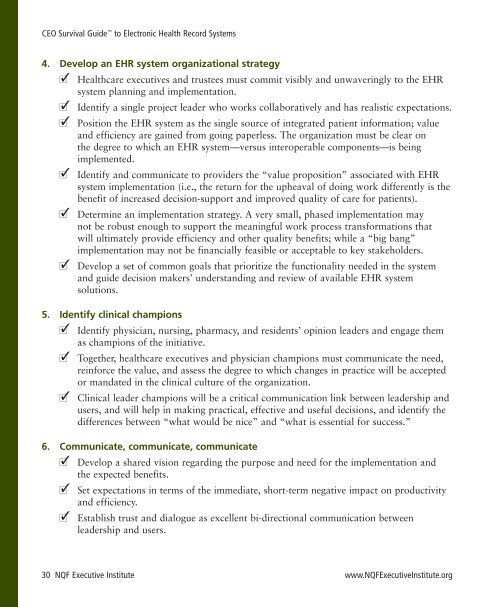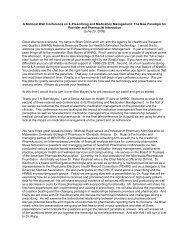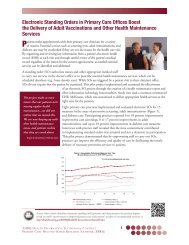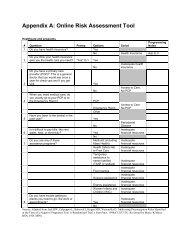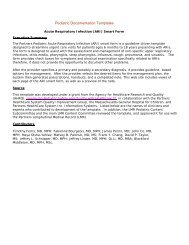CEO Survival Guide - AHRQ National Resource Center; Health ...
CEO Survival Guide - AHRQ National Resource Center; Health ...
CEO Survival Guide - AHRQ National Resource Center; Health ...
You also want an ePaper? Increase the reach of your titles
YUMPU automatically turns print PDFs into web optimized ePapers that Google loves.
<strong>CEO</strong> <strong>Survival</strong> <strong>Guide</strong> to Electronic <strong>Health</strong> Record Systems4.5.6.Develop an EHR system organizational strategy■✓ <strong>Health</strong>care executives and trustees must commit visibly and unwaveringly to the EHRsystem planning and implementation.■✓ Identify a single project leader who works collaboratively and has realistic expectations.■✓ Position the EHR system as the single source of integrated patient information; valueand efficiency are gained from going paperless. The organization must be clear onthe degree to which an EHR system—versus interoperable components—is beingimplemented.■✓ Identify and communicate to providers the “value proposition” associated with EHRsystem implementation (i.e., the return for the upheaval of doing work differently is thebenefit of increased decision-support and improved quality of care for patients).■✓ Determine an implementation strategy. A very small, phased implementation maynot be robust enough to support the meaningful work process transformations thatwill ultimately provide efficiency and other quality benefits; while a “big bang”implementation may not be financially feasible or acceptable to key stakeholders.■✓ Develop a set of common goals that prioritize the functionality needed in the systemand guide decision makers’ understanding and review of available EHR systemsolutions.Identify clinical champions■✓ Identify physician, nursing, pharmacy, and residents’ opinion leaders and engage themas champions of the initiative.■✓ Together, healthcare executives and physician champions must communicate the need,reinforce the value, and assess the degree to which changes in practice will be acceptedor mandated in the clinical culture of the organization.■✓ Clinical leader champions will be a critical communication link between leadership andusers, and will help in making practical, effective and useful decisions, and identify thedifferences between “what would be nice” and “what is essential for success.”Communicate, communicate, communicate■✓ Develop a shared vision regarding the purpose and need for the implementation andthe expected benefits.■✓ Set expectations in terms of the immediate, short-term negative impact on productivityand efficiency.■✓ Establish trust and dialogue as excellent bi-directional communication betweenleadership and users.30 NQF Executive Institute www.NQFExecutiveInstitute.org


